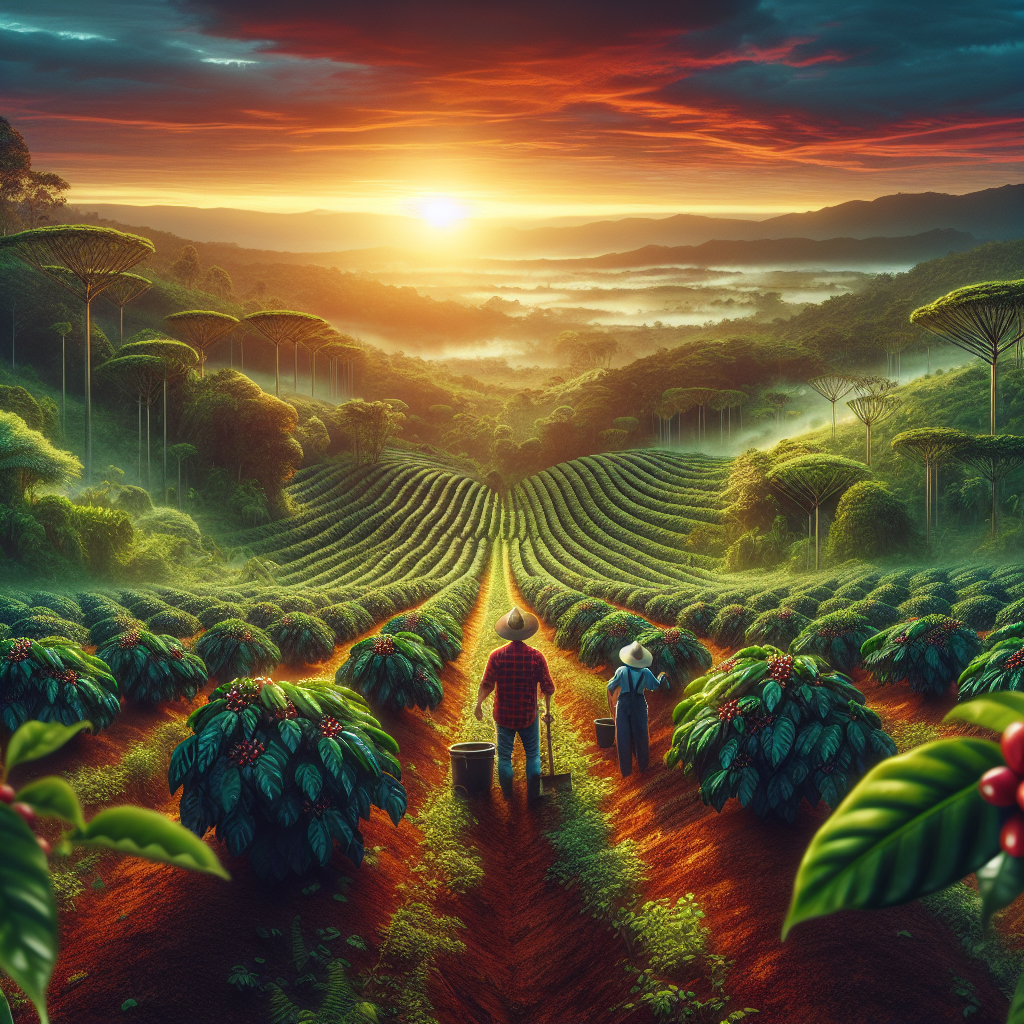“`html
Exploring the Sustainable Future of Robusta Coffee: Cultivation Practices and Environmental Impact
1. Introduction to Robusta Coffee
Robusta coffee, scientifically known as Coffea canephora, plays a significant role in the global coffee landscape due to its robust flavor and higher caffeine content than its more popular sibling, Arabica. This bean, hailing from various regions including parts of Africa and Southeast Asia, thrives in conditions that would challenge many alternative coffee plants. As climate change becomes a more prominent concern, the interest in Robusta coffee’s resilient nature continues to grow, highlighting its potential in sustainable production.
2. Cultivation Practices for Robusta Coffee
Optimal growth of Robusta coffee beans occurs in hot, humid environments, although they are quite adaptable to fluctuating climate conditions. Effective soil management is essential for consistent yield quality, often requiring a deliberate approach in fertilization and pest control. Integrated pest management (IPM) strategies are now a mainstay in achieving productive crops, utilizing natural predators and minimizing chemical use. Water management remains crucial, with sustainable techniques ensuring that this vital resource is conserved. Employing organic farming and agroforestry, Robusta coffee cultivates a harmonious balance with the environment.
3. Environmental Impact of Robusta Coffee Production
Environmental Impact Comparison: Robusta vs. Arabica Coffee
| Aspect | Robusta Coffee | Arabica Coffee |
|---|---|---|
| Carbon Footprint | Low (more efficient growth) | High (requires more resources) |
| Water Usage | Moderate | Higher (requires more water for optimal growth) |
| Deforestation Risks | Higher (often grown in less sustainable conditions) | Lower (can be grown sustainably in shaded areas) |
Robusta coffee production offers a mixed environmental impact. While its lower carbon footprint is beneficial, the deforestation risks associated with its cultivation remain a vital area of concern. Strategies are being developed to mitigate soil degradation, which could include more sustainable land-use practices.
4. Flavor Profile and Brewing Characteristics of Robusta Coffee
Robusta beans are celebrated for their bold and complex flavor profile, showcasing earthy, woody, and nutty notes that cater to those seeking a more intense coffee experience. The higher caffeine content not only energizes but also influences the robust taste, distinguishing it significantly from Arabica varieties. In terms of brewing, Robusta excels in producing a thick crema, making it an excellent choice for espressos and coffee blends.
5. Economic Aspects of Robusta Coffee
With increasing demand in many coffee markets, Robusta beans are becoming a cornerstone of economic activity in numerous developing regions. From fair trade agreements to direct trade systems, growers are benefiting from a more equitable distribution of profits. The role of Robusta in specialty coffee markets has been expanding, underscored by its advantageous cost and high yield potential.
6. Conclusion and Future Directions
To sum up, the sustainable cultivation of Robusta coffee is integral to addressing global challenges associated with resource management and environmental conservation. The adoption of innovative farming practices can bolster the resilience of coffee-growing communities, fostering economic growth. As consumers, supporting sustainable Robusta coffee not only aids these efforts but also enhances the coffee ecosystem at large. For those interested in broadening their coffee knowledge, explore more insights here.
“`
Shop at Breville now!
https://breville.oie8.net/oqDqrE
Shop RobustaCoffee Beans at Amazon now!
Click here





